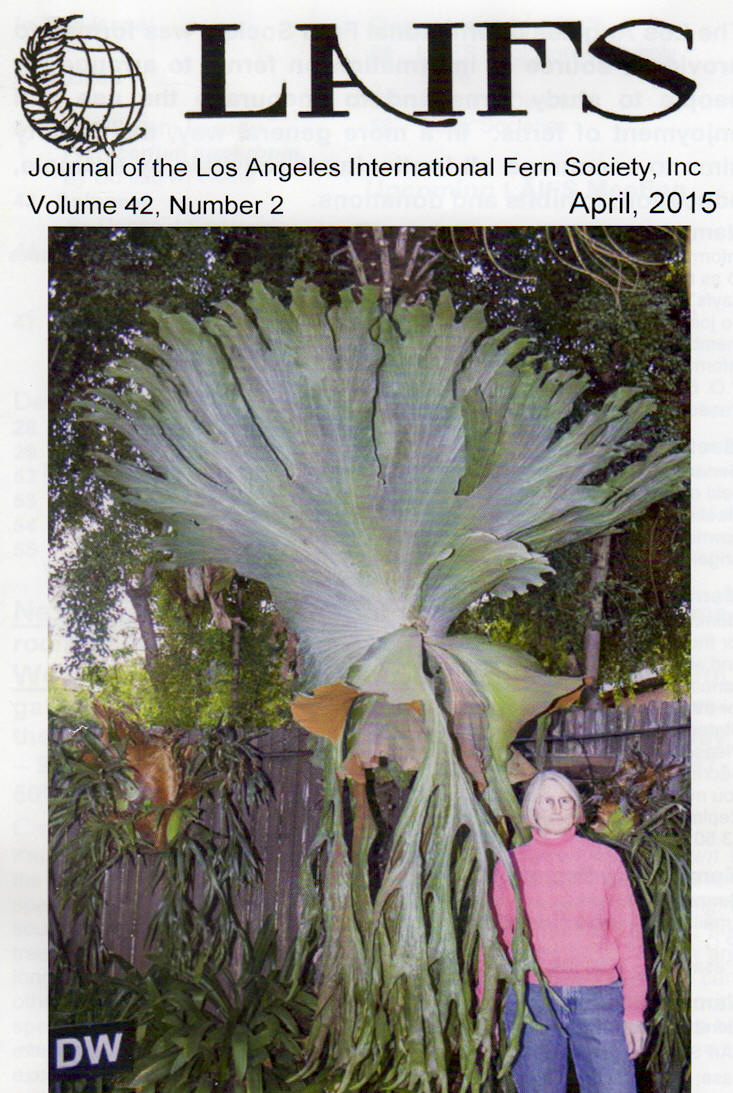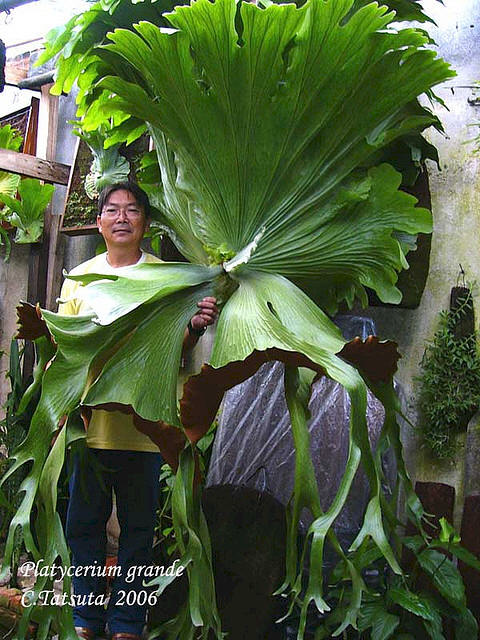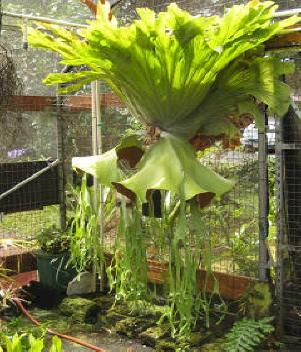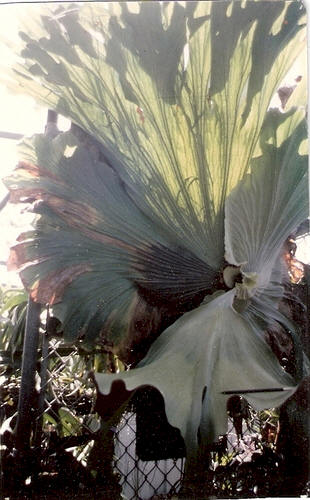|
Platycerium grande Two spore patches per fertile frond of equal size |
|||||||||||||||||||||||||||||||||||||||||||||||||||||||||
| Originally P. grande and P. superbum
were considered the same plant. Then in 1970 Joncheere and
Hennipman separated them into two separate species. The plants from
the Philippines were called P. grande and the plants native to
Australia were given the name P. superbum. The plants are
similar, but there are unique differences in the two species. I have a platy in the back yard obtained in the 1970s that is still only 12 inches tall and even though it is labeled P. grande, the platy has not matured enough to recognize the different characteristics between P. grande and P. superbum. It was recently relocated to a better location in the back yard and in 6 months it has almost doubled in size. After one year in under a 50% shade cloth facing south, it has its first fertile frond. Today the trade only seems to sell P. superbum which may be easier to grow. P. grande is very difficult to locate in the trade. I was able to import one from Thailand in 2016 Roy Vail reports in 1980 that the native growing area for P. grande is being destroyed by slash-and-burn clearing. Possibly today the P. grande may be in danger of becoming extinct in the wild. |
|||||||||||||||||||||||||||||||||||||||||||||||||||||||||
| The P. superbum shown on the right is on
the cover of the April 2015 issue of the LAIFS Journal and has grown in
Southern California on a palm tree. Recently the tree was removed and
the platy was relocated to the Huntington Library. This very large
example of P. superbum appears to be almost 20 ft tall. It's
shown here to illustrate the difference in the dangling fronds below the
spore patch lobs. The P. grande (above) dangling fronds appear to be
much narrower then the P. superbum but I believe that is a result of
the cultivar. The P. grande and the P. superbum are very tolerant of full filtered sun and can tolerate temp down to freezing. There are reports of the fertile fronds of P. superbum getting a sunburn on the spore patch lobes.
|
|||||||||||||||||||||||||||||||||||||||||||||||||||||||||
* The temp range of the P. grande is probably close to the P. superbum but not quite as cold tolerant. ** Frequently the first fertile frond of P. grande may be undivided with only one spore patch. As the plant matures a second divided lobe with 2 spore patches sill develop. *** Unconfirmed data |
 |
||||||||||||||||||||||||||||||||||||||||||||||||||||||||

Two P. grande photos, each platy displays divided lobes with equal size spore patches on each half of the divided lobe. The left photo has a pencil on the right lobe to suggest size.
|
|||||||||||||||||||||||||||||||||||||||||||||||||||||||||
|
[ Plant Glossary ] |
|||||||||||||||||||||||||||||||||||||||||||||||||||||||||


